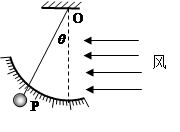Personality is to a large extent inherent. A-type parents usually (1) A-type offspring. But the environment must also have a profound effect (2) if competition is important to the parents, it is (3) to become a major factor in the lives of their children.
One place where children (4) A characteristics is school, which is, (5) its very nature, a highly competitive institution. Too many schools (6) the "win at all costs" moral standard and measure their success by sporting achievements. The current (7) for making children compete against their classmates or against the (8) produces a two-layer system, in which competitive A types seem in some way better than their B type fellows. Being too (9) to win can have dangerous consequences: remember that Pheidippides, the first marathon runner, (10) dead seconds after saying. "Rejoice, we conquer!"
(11) the worst form of competition in schools is the disproportionate emphasis on examinations. There is, for example, a (12) school that allows pupils to concentrate on those things they do well. The (13) of competition by examination are somewhat questionable, but competition in the certain (14) of failure is positively harmful.
(15) , it is neither practical nor desirable that all A youngsters change into B’s. The world needs types, and schools have an important duty to try to (16) a child’s personality to his possible future employment. It is top management.
If the preoccupation of schools with academic work was (17) , more time might be spent teaching children surer values. Perhaps selection (18) the caring professions, especially medicine, could be made less by good grades in chemistry and more by such (19) as sensitivity and sympathy. It is surely a mistake to choose our doctors exclusively from A type stock. B’s are important and should be (20) .
14()
A.destiny
B.recognition
C.knowledge
D.intention

